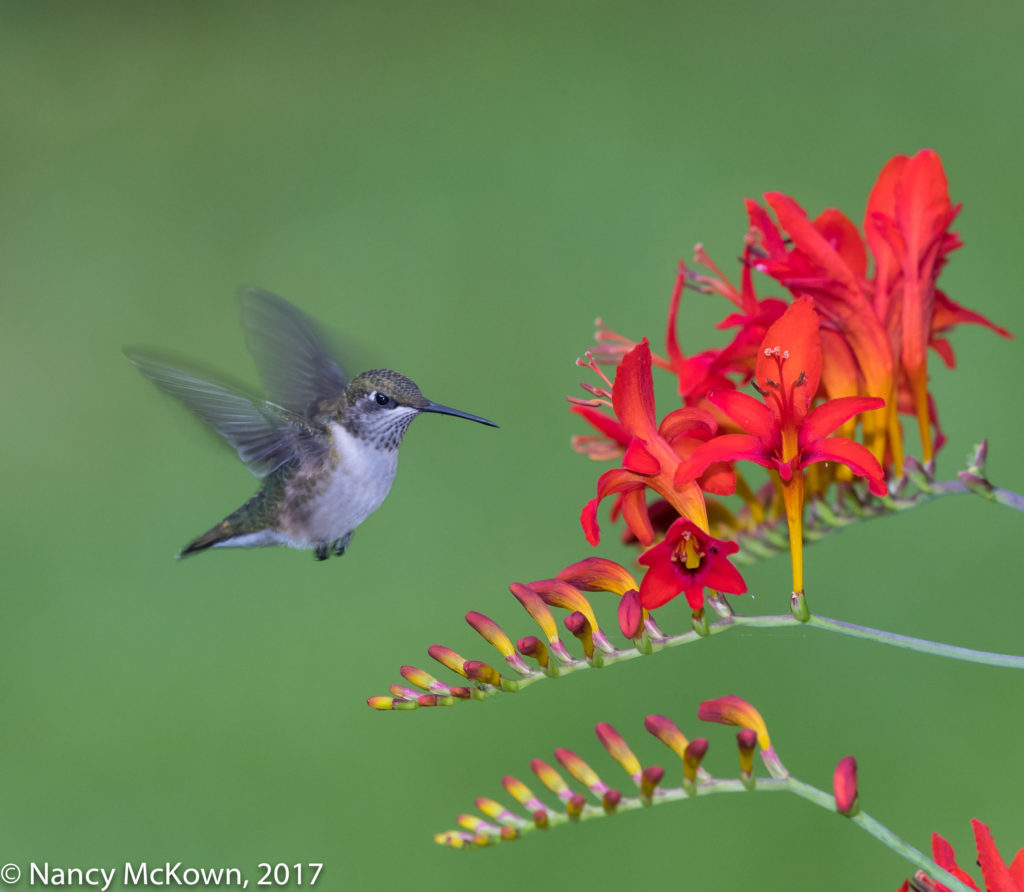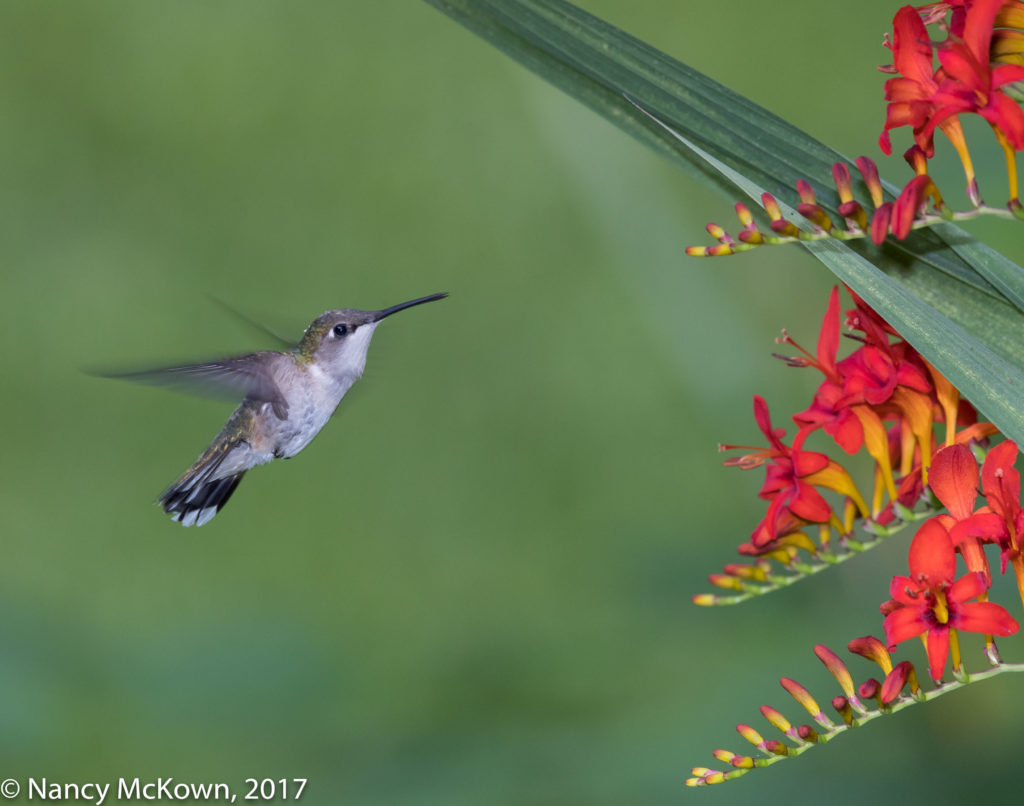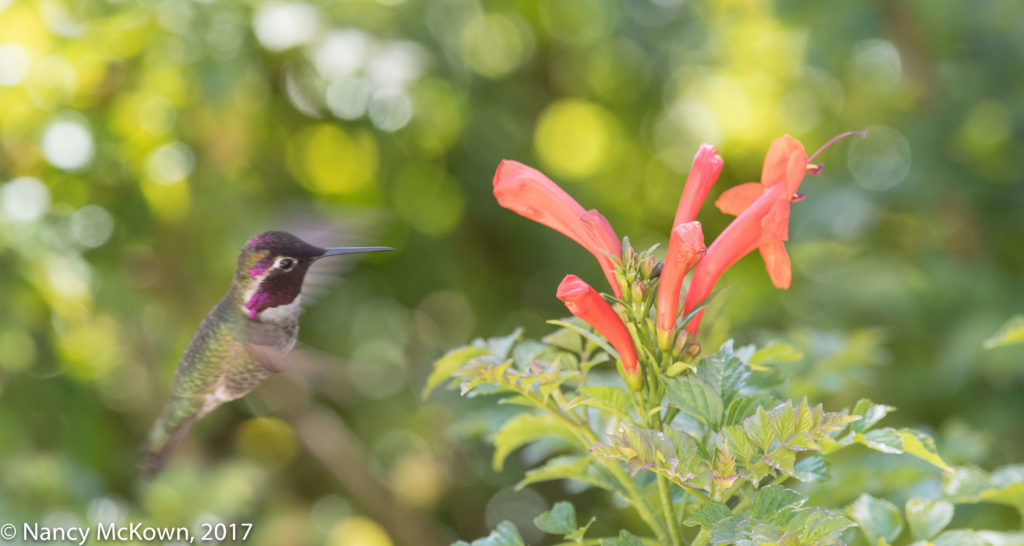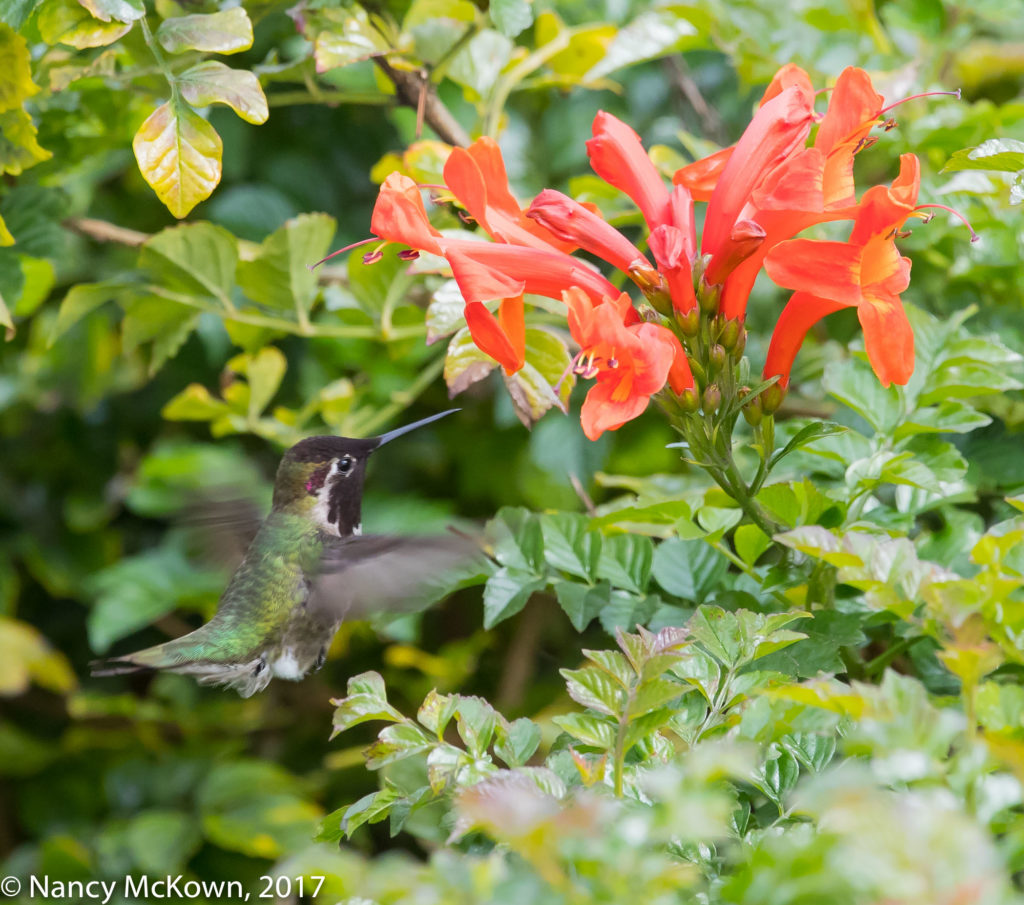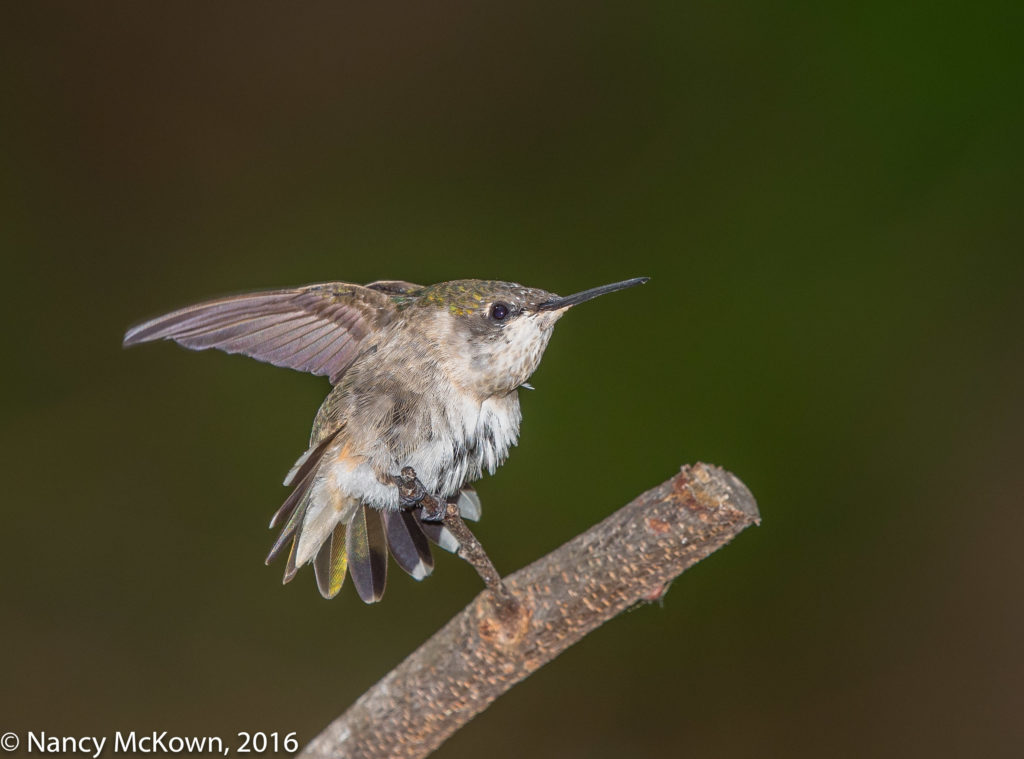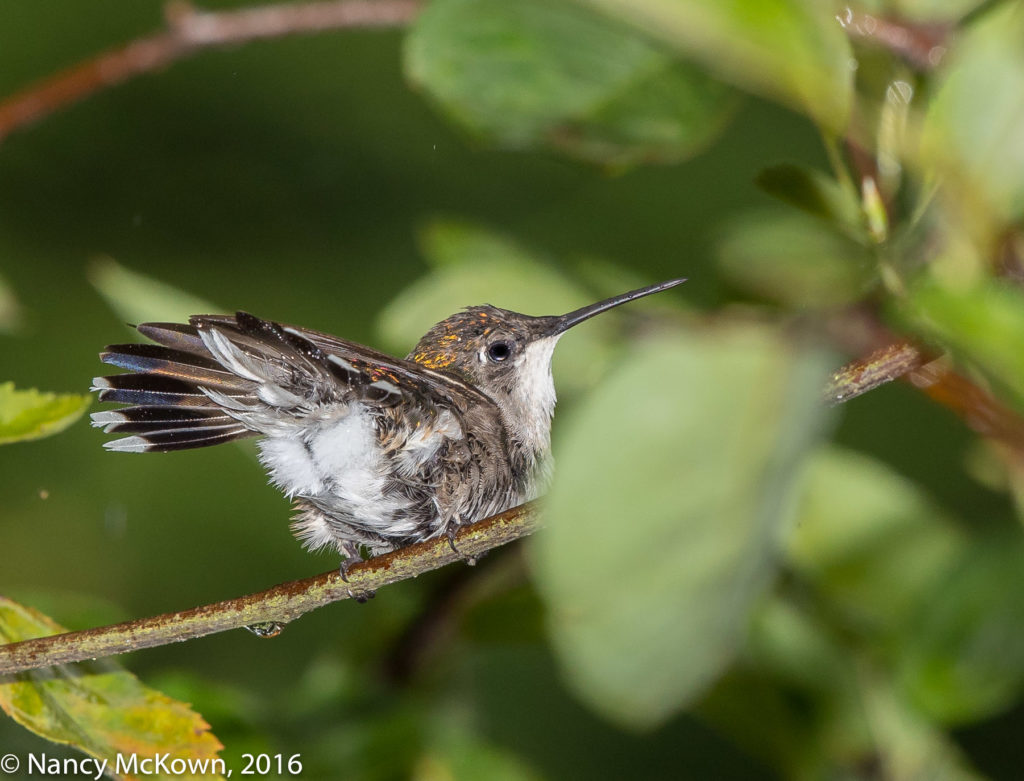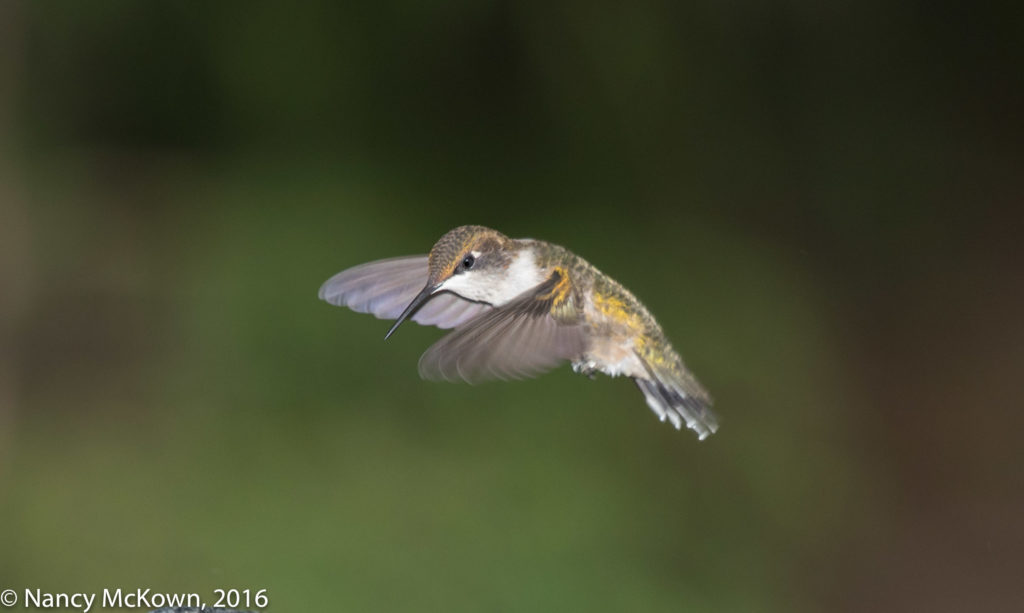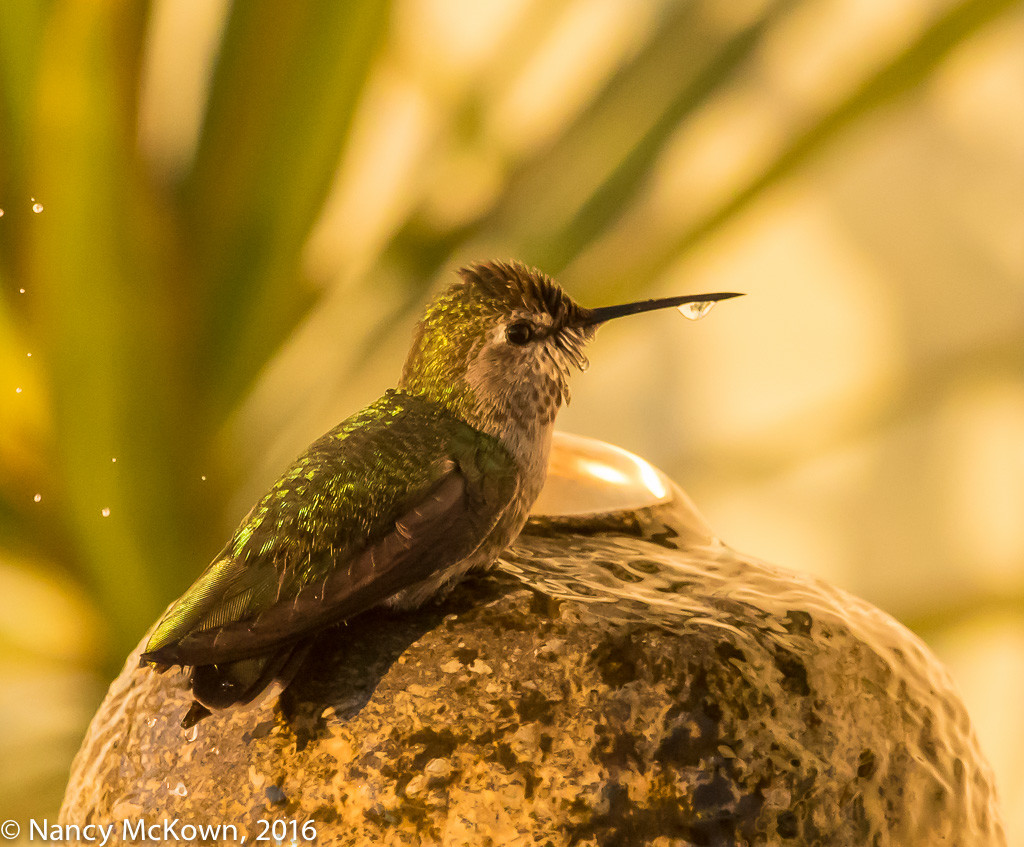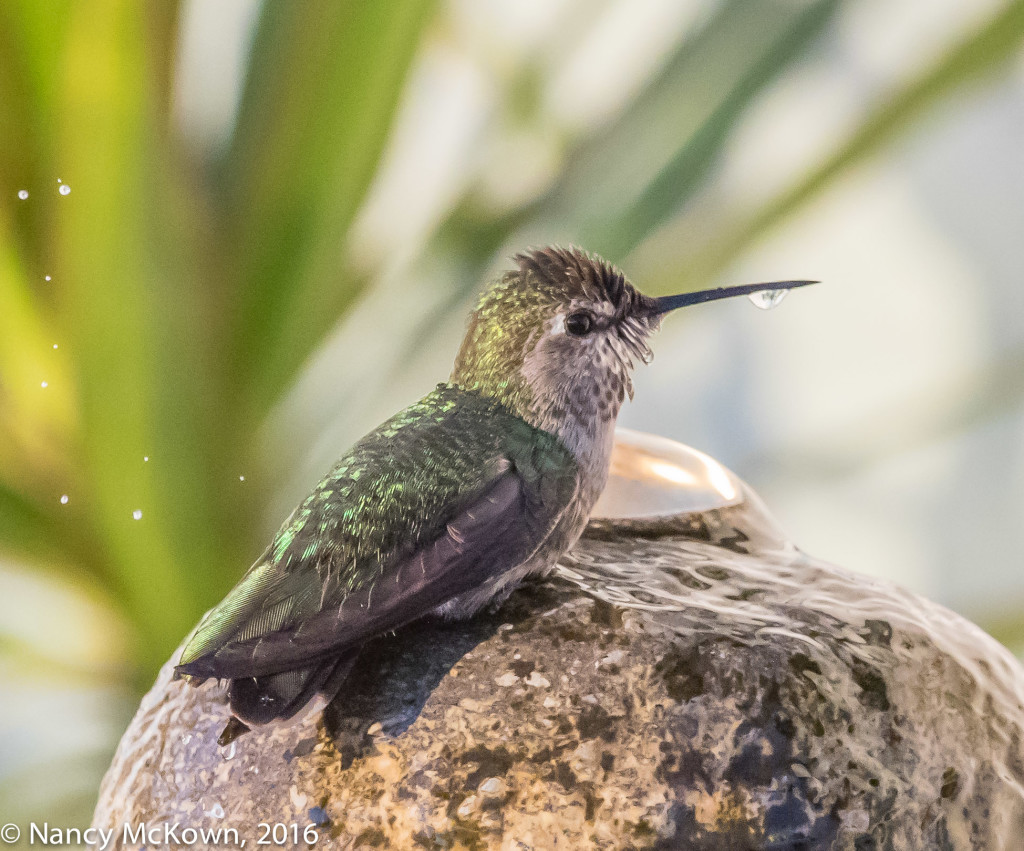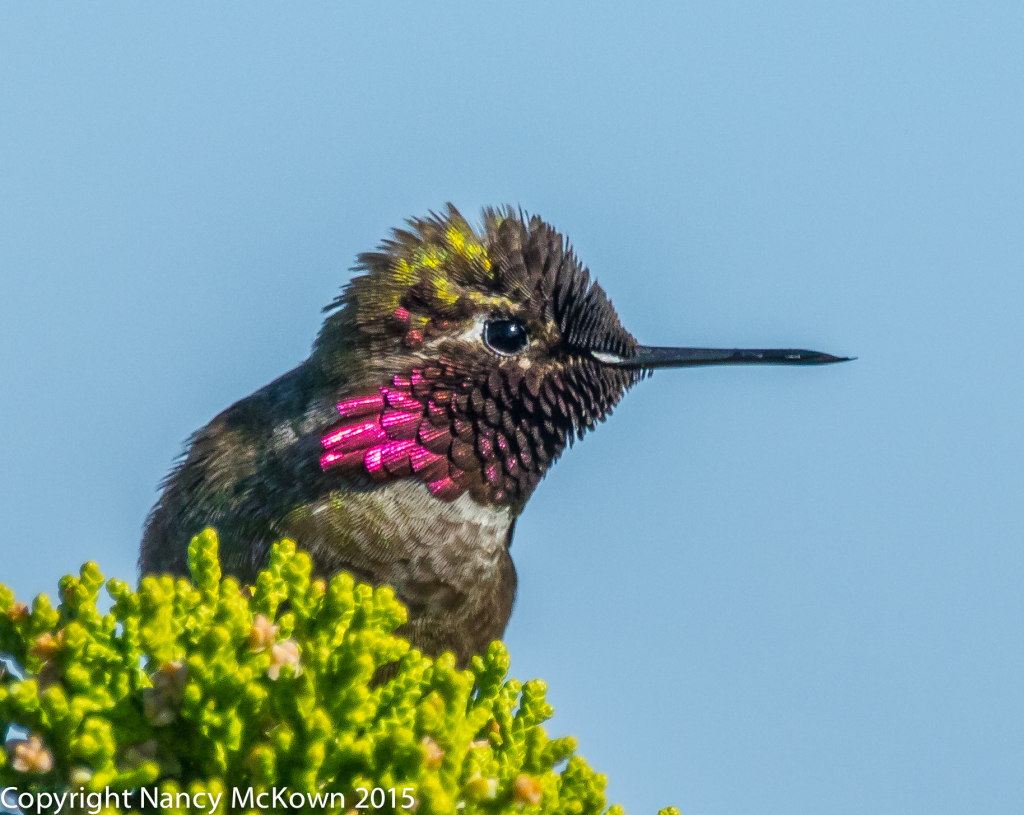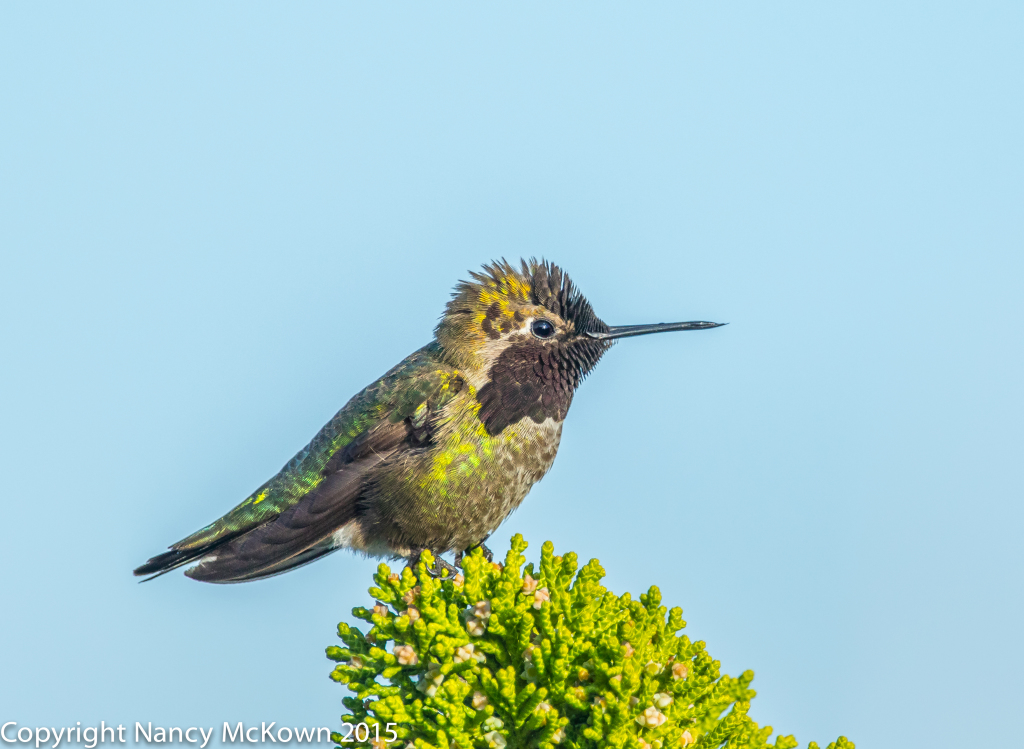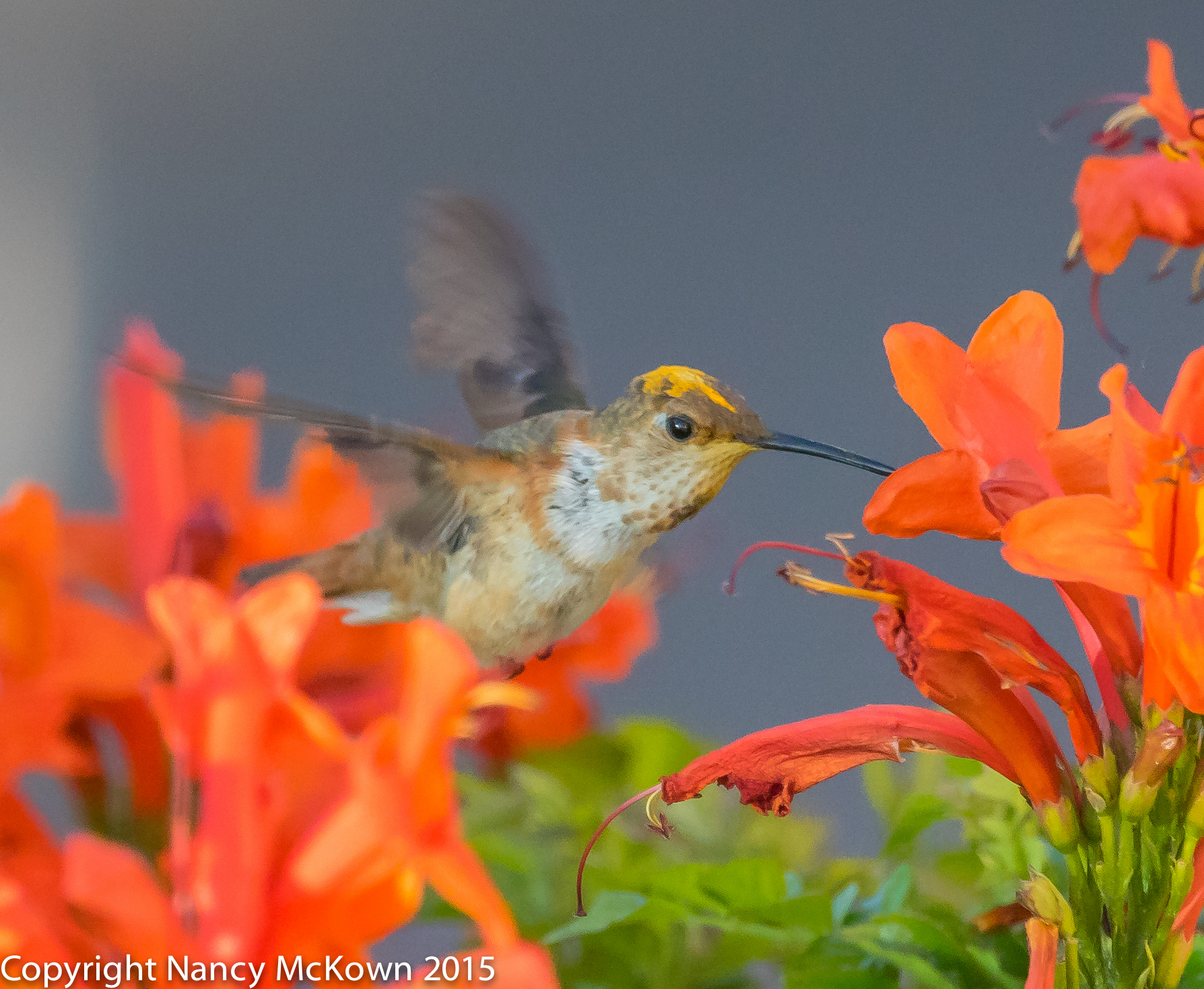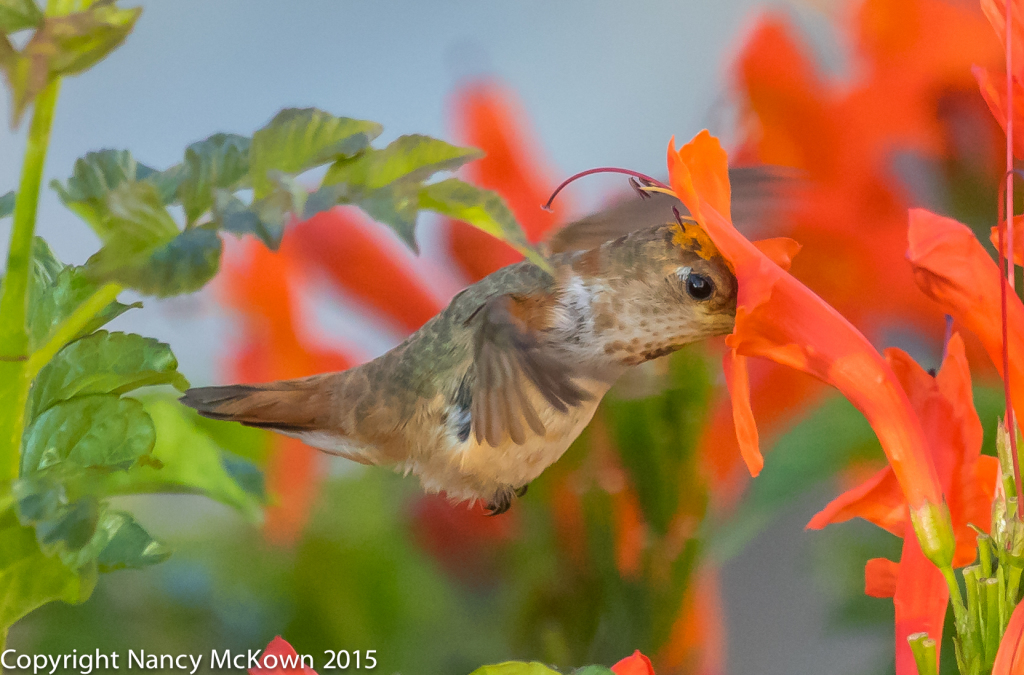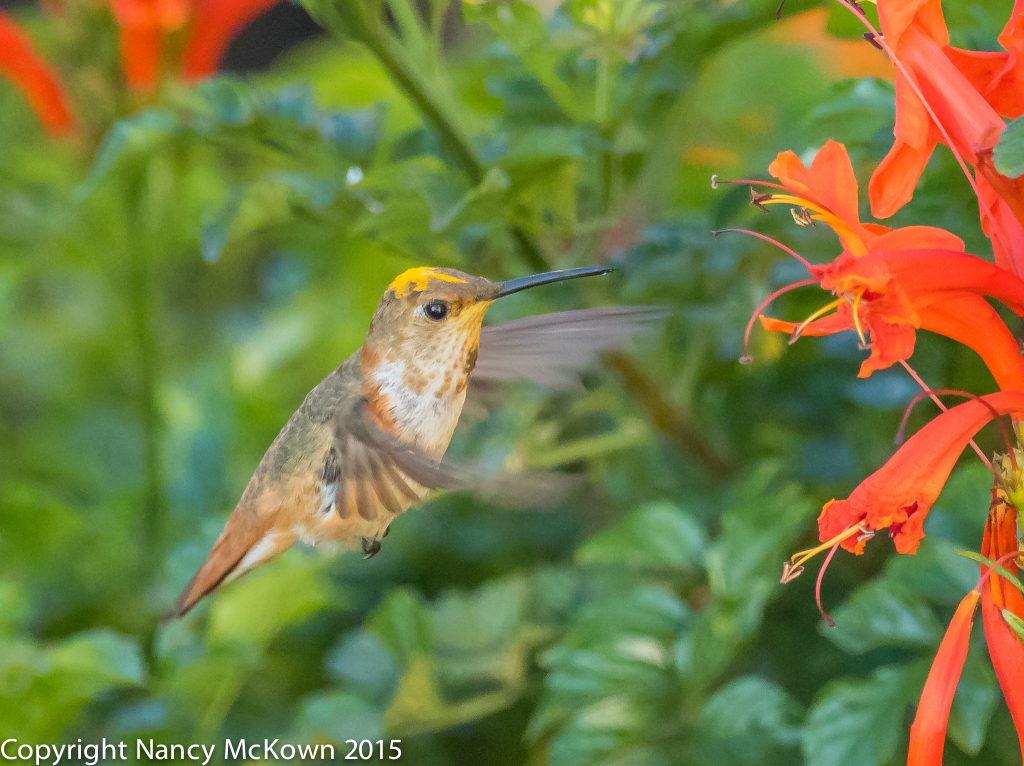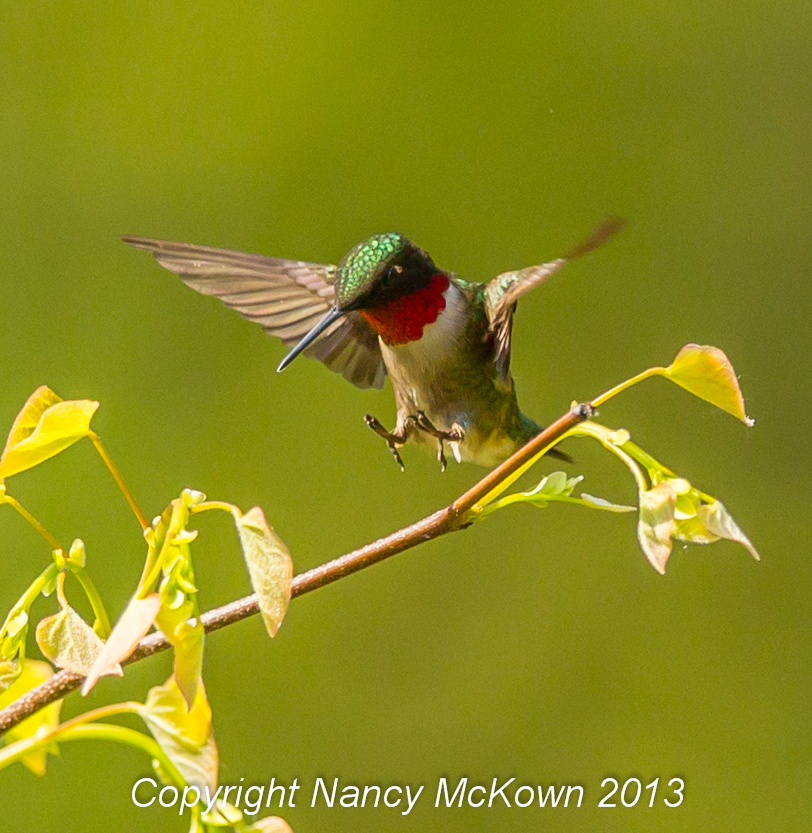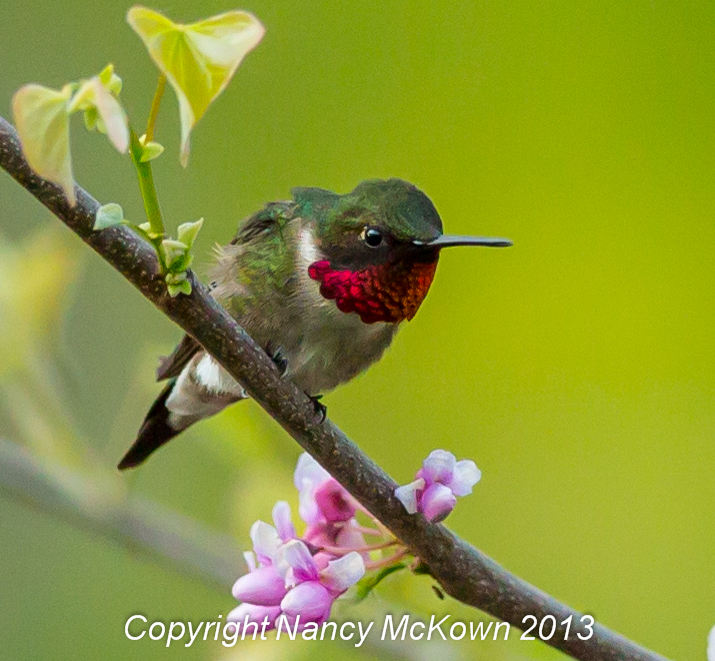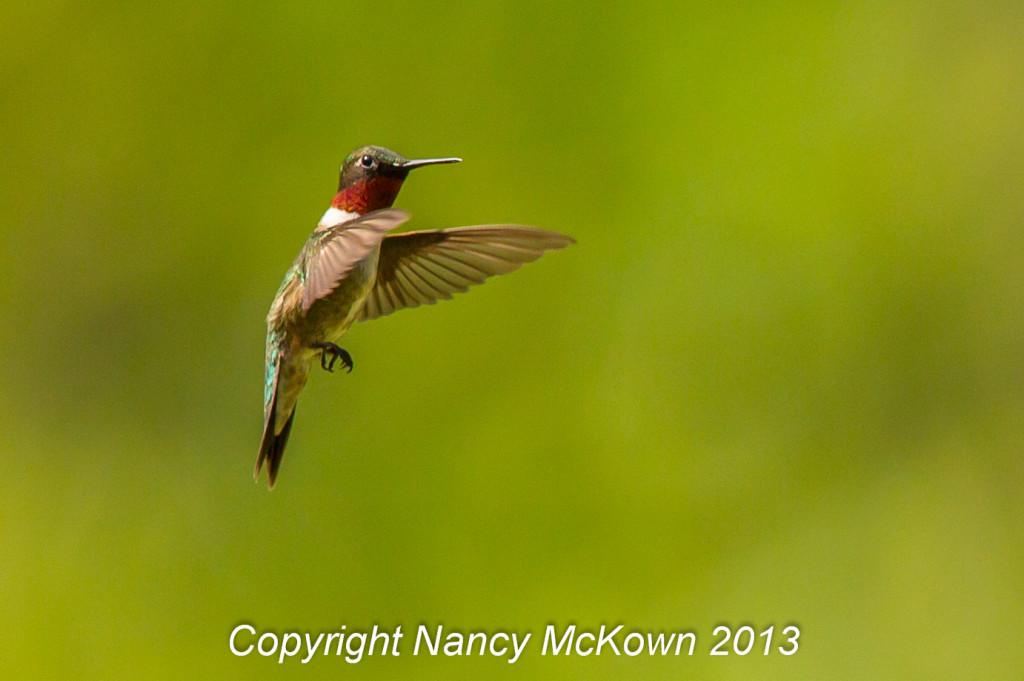They Come, They Go
August 10
The House Wrens that were so prevalent in our yard during the spring and summer are suddenly no where to be found. I miss their bright beautiful songs and their industrious display and hunting behaviors. I’ll keep watching, but I’m pretty sure they are laying low, going through their molts, taking advantage of the ground level hunting opportunities and resting up for migration.
Rose Breasted Grosbeaks and Baltimore Orioles who were so busily tending to their fledglings only a week ago are no longer showing themselves. I can see an abandoned Oriole nest from my window, hanging by only a few threads, in disarray and looking quite uninhabitable. One good wind will bring it down.
The Hummers never disappoint…. always flitting in and out, displaying, chasing, divebombing… ever watchful. They will continue their activities through September undeterred, no matter how close the camera and flash intrude into their escapades. Why these diminutive birds don’t feel the biological urge to rest before their long migratory journey ahead I’ll never know.

Female Ruby Throated Hummingbird.
ISO400; f/7.1; 1/250 Second.
August 15
I no longer hear the the cacophony of bird song that use to fill the air in early morning, even though migrators like Robins, Red Winged Blackbirds, Gold Finches, Song Sparrows, House Finches, Towhees, and Wood Thrushes are still around. No journey ahead for Titmice, Chickadees, Cardinals, most woodpeckers and doves. Is it more of a relief to stay through the MI winter or face the perils of migration?
I look around and note that the Gray Catbirds, Cowbirds, Phoebes, and Chipping Sparrows are not showing themselves in our yard anymore.
August 20
Glimpses of yellow flash around the fountain. Too quick to get an ID shot. We have a nesting pair of American Redstart Warblers so what I see may be the female. Both cameras are set up in different locations in the house. Soon I’ll have those windows open most of the day…..mosquitoes permitting.
August 25
Leaves are still green and heavy on the trees, making bird ID and tracking birds with a long lens very difficult. Cicadas are droning -alternately loud then fading. It’s hot and muggy here in SW MI. The windows are open to facilitate a clear shot and that makes for a damp and sticky house. I have the fans going to help keep out the mosquitos.
Sunny with a strong east wind today. I saw a Tennessee Warbler, a Red Eyed Vireo and one Merlin Falcon on Lakeshore Drive. Got in a couple shots to confirm ID but the resulting images were awful.
August 26
Spent most of the day watching, but only saw a Least Flycatcher peeking around in his hiding place in the Serviceberry tree. A few gold leaves have a tentative hold to their branches.
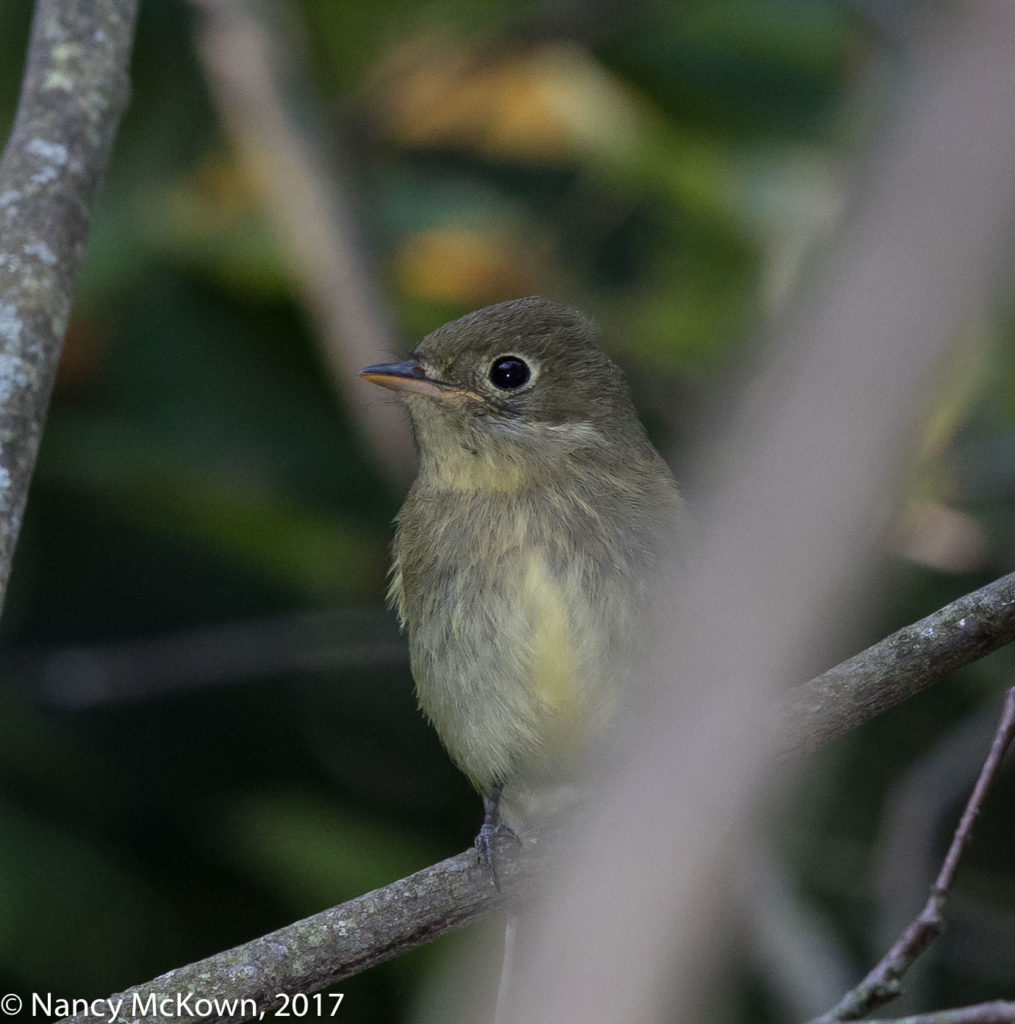
Deep within the Serviceberry Tree.
ISO1000; f/9; 1/250 Second
August 27
A rain storm –might it bring some traveling warblers down to the understory trees? Two cameras on swivel tripod heads facing different directions in the library. I keep checking other possible warbler landing spots–like near the dining room, in back near the fountain or off the front porch. Thinking about relocating one of the cameras… but doesn’t make sense to keep moving the equipment unless I see more activity in that location. I can stretch myself only so far. Uneven cloud cover blankets the yard with intermittent light, mostly sparse. Each camera has a flash and telephoto extender attached. (I fiddled with the wires on my old Canon 580 flash with old Better Beamer flash extender. So far, it’s been working, although I don’t know how accurate the Flash enhanced exposure readings will be.) The rain tickles the leaves. So much movement to track even before I point the lens.
Last year on this date, two warblers were feasting on the bugs on the Serviceberry trees (A Black Throated Green Warbler male and a female Magnolia Warbler). This year I saw and managed a shot of a perky little Chestnut Sided Warbler. (See below. Female or first year male…so different looking than the mature males.) The flash intensity was reduced to -2/3. (Surprisingly the flash blast doesn’t seem to worry the birds.)

An Early Arrival
ISO1000; f/9; 1/250 Second
The usual birds are out and about….. Titmice, Blue Jays, Gold Finches, Downy Woodpeckers. That’s good. It seems that birds find comfort and safety in crowds…. much more likely to have a warbler sighting when there’s lots of other activity. I take a few shots of the oft photographed faithfuls/dependables to review the exposure settings and flash intensity. Keeps me going.
August 31
Keep hoping for a migrating newcomer, but no luck. I was happy to get ID shots of a Wilson’s Warbler and female Magnolia Warbler. I look forward to September… migration has only just begun.
